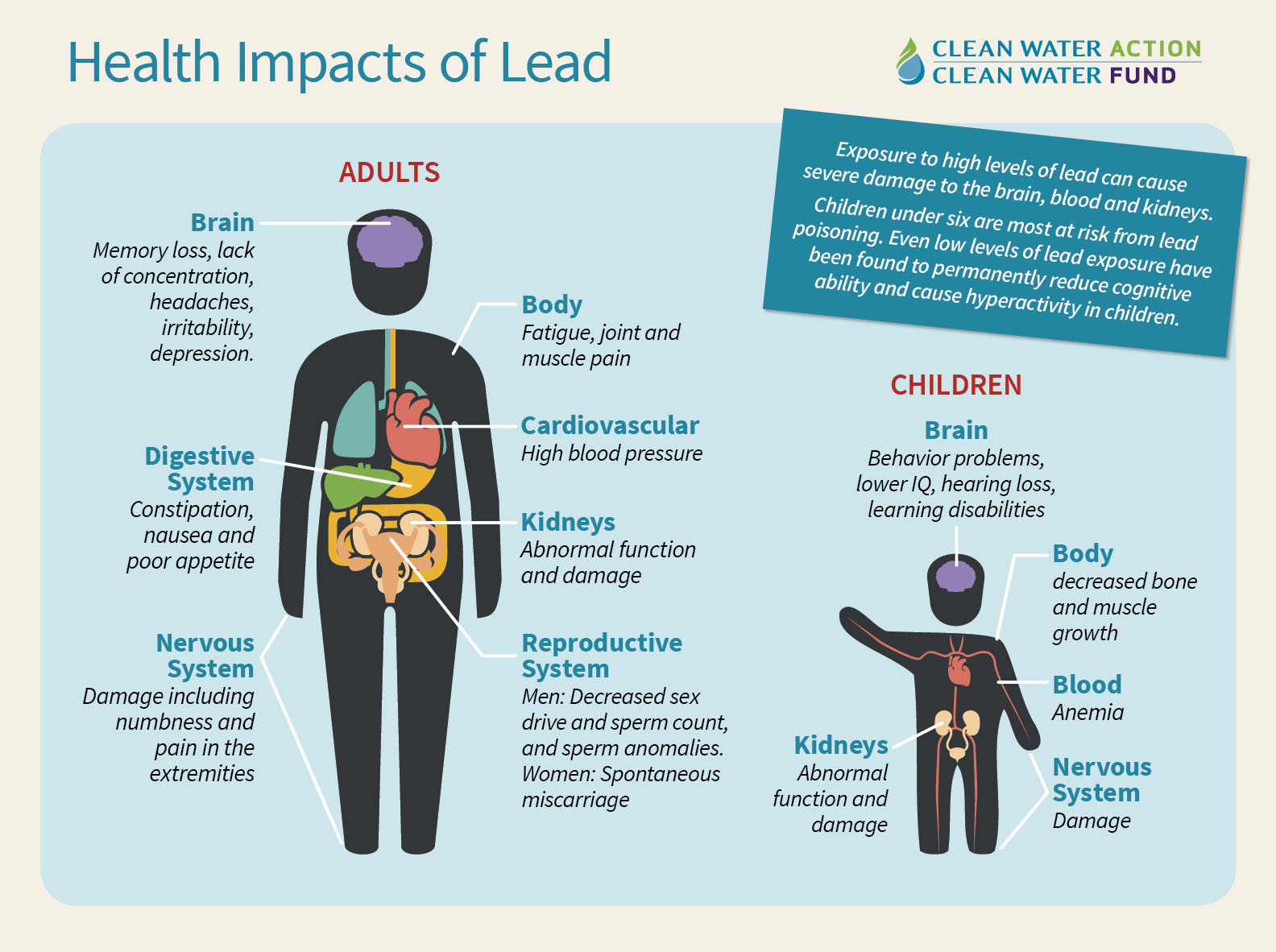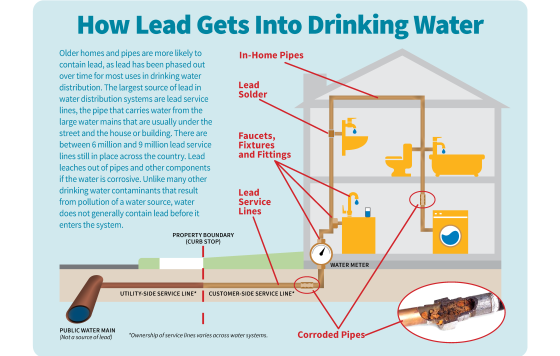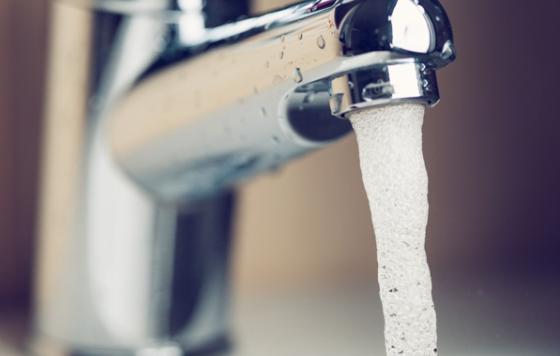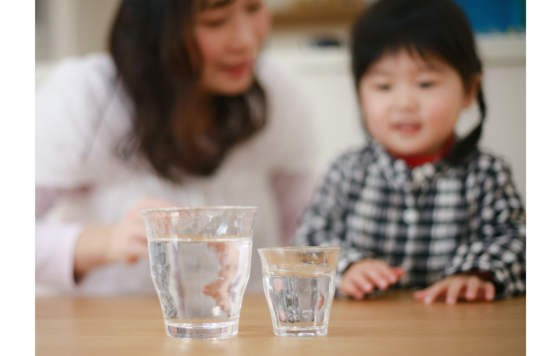Lead is a highly poisonous metal and can affect almost every organ in the body and the nervous system, especially in children who are still growing and developing. Lead enters drinking water when it flows through pipes or plumbing fixtures made of lead. There is NO safe level of lead exposure for children or adults.

What are we doing in Rhode Island?
Clean Water Action is part of the Lead Free RI coalition which is working to ensure that all remaining lead service lines in the state are safely replaced as soon as possible. For more on the Lead Free RI coalition and our work, visit leadsafekids.org.
Factsheet: Lead and Drinking Water (English & Spanish)
To protect public health, we must reduce lead exposure at the drinking water tap. Clean Water is working for improvements in the Safe Drinking Water Act Lead and Copper Rule, supporting communities and water systems in accelerating full replacement of lead service lines through our work with the Lead Service Line Collaborative, and ensuring that funding for water infrastructure is allocated adequately and spent equitably and effectively.
Lead and Drinking Water
The U.S. Environmental Protection Agency estimates that lead in drinking water can be 20% or more of a person’s lead exposure. We need to get lead out of contact with water. That’s where full lead service line replacement comes in - alongside advocacy, collaboration, and education.
Clean Water Action Welcomes Improved Distribution of Lead Service Line Funding
Today Clean Water Action welcomed an EPA announcement that federal funding for replacing lead service lines will be allocated based on new data about their presence in each state. Basing distribution of the Bipartisan Infrastructure Law’s lead service line replacement funding on the actual need in each state is a common sense and welcome improvement that will help us put lead service lines behind us more equitably and efficiently.
Stay Informed
Get the latest updates and actions:
Thanks for signing up!
There was a problem processing your signup. Please try again.



